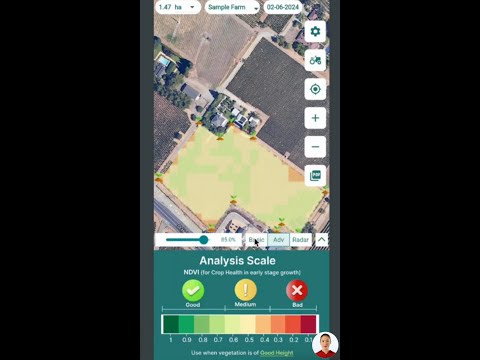North Carolina’s Agricultural Recovery: Economic Outlook and Challenges for Farmers Post-Hurricane Helene
“North Carolina’s agricultural sector, valued at $111 billion, faces recovery challenges after Hurricane Helene’s impact on farmland.”
As we delve into the aftermath of Hurricane Helene and its impact on North Carolina’s agricultural landscape, we find ourselves at a crucial juncture in the state’s economic recovery. The storm, which devastated western North Carolina, left in its wake a trail of destruction that has significantly affected our farming communities. However, amidst the challenges, there are glimmers of hope and resilience that characterize our state’s agricultural sector.
The Impact of Hurricane Helene on North Carolina Agriculture
Hurricane Helene’s fury unleashed unprecedented damage to our state’s farmlands, particularly in western North Carolina. The storm’s impact was felt across various agricultural sectors, from crop production to livestock farming. Let’s break down the key areas affected:
- Crop Damage: Extensive flooding and high winds destroyed vast areas of cropland, affecting major crops such as tobacco, corn, and soybeans.
- Infrastructure Damage: Farm buildings, irrigation systems, and equipment suffered significant damage, hampering immediate recovery efforts.
- Livestock Impact: Many farmers reported losses in their animal farming operations, including poultry and swine facilities.
- Soil Erosion: The hurricane’s intense rainfall led to severe soil erosion in many areas, potentially affecting long-term soil fertility.
The cumulative effect of these damages has been staggering, with initial estimates placing the agricultural losses at around $5 billion. This figure underscores the magnitude of the challenge facing our farming community as we work towards recovery.

Economic Outlook for North Carolina Agriculture in 2025
“Despite post-hurricane setbacks, North Carolina farmers anticipate higher profits in 2025 due to improved weather and reduced input costs.”
Despite the setbacks caused by Hurricane Helene, there’s a sense of cautious optimism among economists and agricultural experts regarding the future of North Carolina’s farming sector. Dr. Jeffrey Dorfman from NC State’s Department of Agricultural and Resource Economics has provided an encouraging forecast for 2025, predicting higher profits for farmers compared to 2024. This positive outlook is attributed to several factors:
- Improved Weather Conditions: Forecasts suggest more favorable weather patterns in the coming years, which could lead to better crop yields.
- Reduced Input Costs: The prices of essential inputs like fertilizer and diesel are expected to decrease, lowering overall production costs for farmers.
- Sector-Specific Growth: Tobacco and animal farming sectors are anticipated to see significant growth, contributing to the overall recovery of the agricultural economy.
These projections offer a ray of hope for our farming community, signaling that despite the current challenges, there’s potential for a strong comeback in the near future.
Challenges Facing North Carolina Farmers
While the economic outlook for 2025 is promising, our farmers continue to face significant challenges in the aftermath of Hurricane Helene. Some of the key issues include:
- Unfarmable Land: Large portions of farmland in western North Carolina remain unfarmable due to flooding and debris.
- Financial Strain: Many farmers are grappling with cash flow issues as they attempt to recover from infrastructure and equipment losses.
- Supply Chain Disruptions: Although improving, supply chain issues continue to affect the timely delivery of farming inputs and the distribution of agricultural products.
- Labor Shortages: The storm has exacerbated existing labor shortages in the agricultural sector, making it challenging for farmers to meet their workforce needs.
Addressing these challenges will be crucial for ensuring a robust recovery and setting the stage for the projected growth in 2025.
Government Support and Industry Initiatives
In response to the crisis, various government and industry initiatives have been launched to support North Carolina’s agricultural recovery:
- Emergency Relief Funds: The state government has allocated emergency funds to assist farmers in immediate recovery efforts.
- Infrastructure Rebuilding Programs: Initiatives are underway to rebuild and upgrade agricultural infrastructure, including irrigation systems and farm buildings.
- Low-Interest Loans: Financial institutions are offering low-interest loans to help farmers manage cash flow and invest in recovery efforts.
- Agricultural Development Forum: The recent 20th Annual Agricultural Development Forum provided a platform for farmers to voice their concerns and for officials to outline support strategies.
These measures aim to provide both immediate relief and long-term support to our farming communities as they navigate the path to recovery.
The Role of Technology in Agricultural Recovery
As we look towards recovery and future growth, technology is playing an increasingly important role in North Carolina’s agricultural sector. Innovative solutions are helping farmers optimize their resources and make data-driven decisions. One such technology that’s making a significant impact is satellite-based crop monitoring.
Farmonaut, a leading provider of agricultural technology solutions, offers advanced satellite-based farm management tools that can be particularly beneficial during this recovery period. Their platform provides:
- Real-time Crop Health Monitoring: Farmers can track the health of their crops using multispectral satellite imagery, helping them identify areas that need immediate attention.
- AI-driven Advisory Systems: Personalized recommendations based on satellite data and local conditions can help farmers make informed decisions about resource allocation and crop management.
- Weather Forecasting: Accurate weather predictions enable better planning and risk management, crucial in the post-hurricane recovery phase.
By leveraging these technologies, our farmers can potentially accelerate their recovery process and improve their resilience against future challenges.
North Carolina Agricultural Sector Outlook 2025
| Agricultural Indicators | Pre-Hurricane Helene (2023 est.) | Projected 2025 |
|---|---|---|
| Total Agricultural Sector Value ($ billion) | 111 | 118 |
| Farmable Land Area (million acres) | 8.4 | 8.2 |
| Tobacco Production (million pounds) | 255 | 275 |
| Animal Farming Revenue ($ billion) | 5.5 | 6.2 |
| Average Farm Profitability (%) | 12 | 15 |
| Infrastructure Recovery Progress (%) | N/A | 85 |
| Supply Chain Efficiency (scale 1-10) | 7 | 8.5 |
| Interest Rates for Agricultural Loans (%) | 5.5 | 4.8 |
This table provides a comparative analysis of key agricultural indicators, showcasing the projected recovery and growth of North Carolina’s agricultural sector by 2025. Despite the challenges posed by Hurricane Helene, we can see positive trends in several areas, including increased sector value, higher tobacco production, and improved farm profitability.
Preparing for the Planting Season
As we approach the planting season, our farmers are focused on making the most of the improving conditions. Here are some key strategies they’re employing:
- Soil Restoration: Implementing techniques to restore soil health and fertility in areas affected by flooding and erosion.
- Crop Selection: Choosing resilient crop varieties that are better suited to the post-hurricane conditions.
- Resource Optimization: Utilizing technologies like Farmonaut’s satellite-based monitoring to make efficient use of available resources.
- Financial Planning: Working with financial advisors to create strategies for managing cash flow and accessing necessary funds for planting.
These preparations are crucial for capitalizing on the projected improvements in weather conditions and input costs for the coming years.
The Broader Economic Context
While our focus is on the agricultural sector, it’s important to consider the broader economic context in which our farmers are operating. The overall economic landscape in North Carolina is showing signs of stabilization:
- Employment Stability: Businesses are expected to maintain current employment levels, avoiding large-scale layoffs.
- Interest Rates: A gradual decline in interest rates is anticipated, which could ease financial pressures on farmers and agribusinesses.
- Consumer Purchasing Power: Stable employment is likely to maintain consumer purchasing power, potentially benefiting local agricultural markets.
However, it’s worth noting that many workers are taking on multiple jobs to maintain their standard of living, indicating ongoing economic pressures despite overall stability.
Leveraging Technology for Efficient Resource Management
In the face of these challenges, efficient resource management becomes paramount. This is where advanced agricultural technologies can play a crucial role. Farmonaut’s suite of tools offers several features that can aid in this process:
- Precision Agriculture: By providing detailed insights into crop health and soil conditions, Farmonaut enables farmers to apply inputs like fertilizers and pesticides more precisely, reducing waste and optimizing costs.
- Water Management: Satellite-based soil moisture data can help farmers make informed decisions about irrigation, crucial in areas where water resources may have been affected by the hurricane.
- Yield Prediction: Advanced analytics can provide early yield estimates, helping farmers and agribusinesses plan their operations and finances more effectively.
These technologies not only aid in immediate recovery efforts but also contribute to long-term sustainability and resilience in the face of future challenges.
Explore Farmonaut’s API for advanced agricultural data
The Road to Recovery: Challenges and Opportunities
As we navigate the path to recovery, it’s clear that both challenges and opportunities lie ahead for North Carolina’s agricultural sector. Let’s examine some of the key factors that will shape this journey:
Challenges:
- Climate Resilience: Developing strategies to make farms more resilient to extreme weather events will be crucial for long-term sustainability.
- Labor Shortages: Addressing the ongoing labor shortages in the agricultural sector remains a priority.
- Market Volatility: Farmers will need to navigate potential market fluctuations as the global agricultural landscape continues to evolve.
Opportunities:
- Technological Adoption: Embracing new technologies like those offered by Farmonaut can lead to increased efficiency and productivity.
- Diversification: The recovery period presents an opportunity for farmers to diversify their crops and revenue streams.
- Sustainable Practices: Implementing more sustainable farming practices can not only benefit the environment but also potentially open up new market opportunities.

The Role of Community and Collaboration
In times of crisis and recovery, the strength of our agricultural community shines through. Collaboration between farmers, agricultural organizations, and technology providers like Farmonaut is playing a vital role in the recovery process. Here are some ways this collaboration is manifesting:
- Knowledge Sharing: Farmers are sharing best practices and lessons learned from the hurricane recovery process.
- Cooperative Efforts: Agricultural cooperatives are pooling resources to help members recover more quickly.
- Technology Adoption Support: Organizations are providing training and support to help farmers adopt new technologies that can aid in recovery and future growth.
These collaborative efforts are not only accelerating the recovery process but also strengthening the resilience of our agricultural community as a whole.
Looking Ahead: The Future of North Carolina Agriculture
As we look towards 2025 and beyond, the future of North Carolina’s agricultural sector holds both promise and challenges. The resilience shown by our farming community in the face of Hurricane Helene’s devastation is a testament to their strength and adaptability. Here are some key trends and factors that will likely shape the future of agriculture in our state:
- Technological Integration: The increasing adoption of technologies like Farmonaut’s satellite-based monitoring will continue to drive efficiency and productivity in farming operations.
- Sustainable Practices: There will likely be a greater emphasis on sustainable and climate-resilient farming methods to mitigate the impact of future extreme weather events.
- Diversification: Farmers may increasingly diversify their crops and revenue streams to reduce risk and increase economic stability.
- Value-Added Agriculture: There may be a shift towards more value-added agricultural products, helping farmers capture a larger share of the consumer dollar.
- Agritourism: As the state recovers, there could be growth in agritourism, providing additional income streams for farmers.
While challenges remain, the projected economic outlook for 2025 gives us reason for optimism. With continued support, innovation, and resilience, North Carolina’s agricultural sector is poised not just to recover, but to thrive in the years to come.
Leveraging Farmonaut for Agricultural Recovery and Growth
As we’ve discussed throughout this article, technology will play a crucial role in North Carolina’s agricultural recovery and future growth. Farmonaut’s suite of tools offers several features that can be particularly beneficial during this period:
- Satellite-Based Crop Monitoring: Real-time insights into crop health can help farmers make informed decisions about resource allocation and crop management.
- AI-Powered Advisory: Personalized recommendations based on satellite data and local conditions can guide farmers in optimizing their operations.
- Weather Forecasting: Accurate weather predictions enable better planning and risk management, crucial in the post-hurricane recovery phase.
- Resource Management: Tools for efficient management of water, fertilizers, and other inputs can help farmers optimize their use of limited resources.
By leveraging these technologies, North Carolina farmers can potentially accelerate their recovery process, improve their resilience against future challenges, and position themselves for the projected growth in 2025 and beyond.
Access Farmonaut’s API Developer Docs for integration into your agricultural systems
Conclusion: A Resilient Future for North Carolina Agriculture
As we conclude our exploration of North Carolina’s agricultural recovery and economic outlook post-Hurricane Helene, we’re left with a sense of cautious optimism. The challenges faced by our farming community have been significant, but so too has been their resilience and determination.
The projected economic outlook for 2025, with its promise of higher profits and improved conditions, offers a beacon of hope. However, this positive future is not guaranteed – it will require continued effort, innovation, and support from all stakeholders in the agricultural sector.
Technology, particularly solutions like those offered by Farmonaut, will play a crucial role in this recovery and growth process. By embracing these tools, our farmers can not only recover from the impacts of Hurricane Helene but also position themselves for a more resilient and prosperous future.
As we move forward, let’s continue to support our farming communities, embrace innovation, and work together towards a stronger, more resilient agricultural sector in North Carolina. The challenges are significant, but so too are the opportunities that lie ahead.
FAQs
- Q: How long is the recovery process expected to take for North Carolina’s agricultural sector?
A: While the recovery process is ongoing, significant improvements are expected by 2025. However, full recovery may take several years, depending on various factors including weather conditions and economic support. - Q: What role can technology play in the agricultural recovery process?
A: Technology, such as Farmonaut’s satellite-based crop monitoring and AI-powered advisory systems, can help farmers optimize resource use, make data-driven decisions, and improve overall farm management during the recovery process. - Q: How are farmers preparing for the upcoming planting season given the current challenges?
A: Farmers are focusing on soil restoration, selecting resilient crop varieties, optimizing resource use through technology, and careful financial planning to prepare for the planting season. - Q: What support is available for farmers affected by Hurricane Helene?
A: Support includes emergency relief funds, infrastructure rebuilding programs, low-interest loans, and various government and industry initiatives aimed at aiding recovery efforts. - Q: How can farmers access Farmonaut’s agricultural technology solutions?
A: Farmers can access Farmonaut’s solutions through their web and mobile applications, as well as their API for integration into existing systems. Links to these resources are provided in the article.
Earn With Farmonaut
Earn 20% recurring commission with Farmonaut’s affiliate program by sharing your promo code and helping farmers save 10%. Onboard 10 Elite farmers monthly to earn a minimum of $148,000 annually—start now and grow your income!
Access Farmonaut’s Solutions
Ready to leverage advanced agricultural technology for your farm’s recovery and growth? Access Farmonaut’s solutions through the following platforms:
Farmonaut Subscriptions







